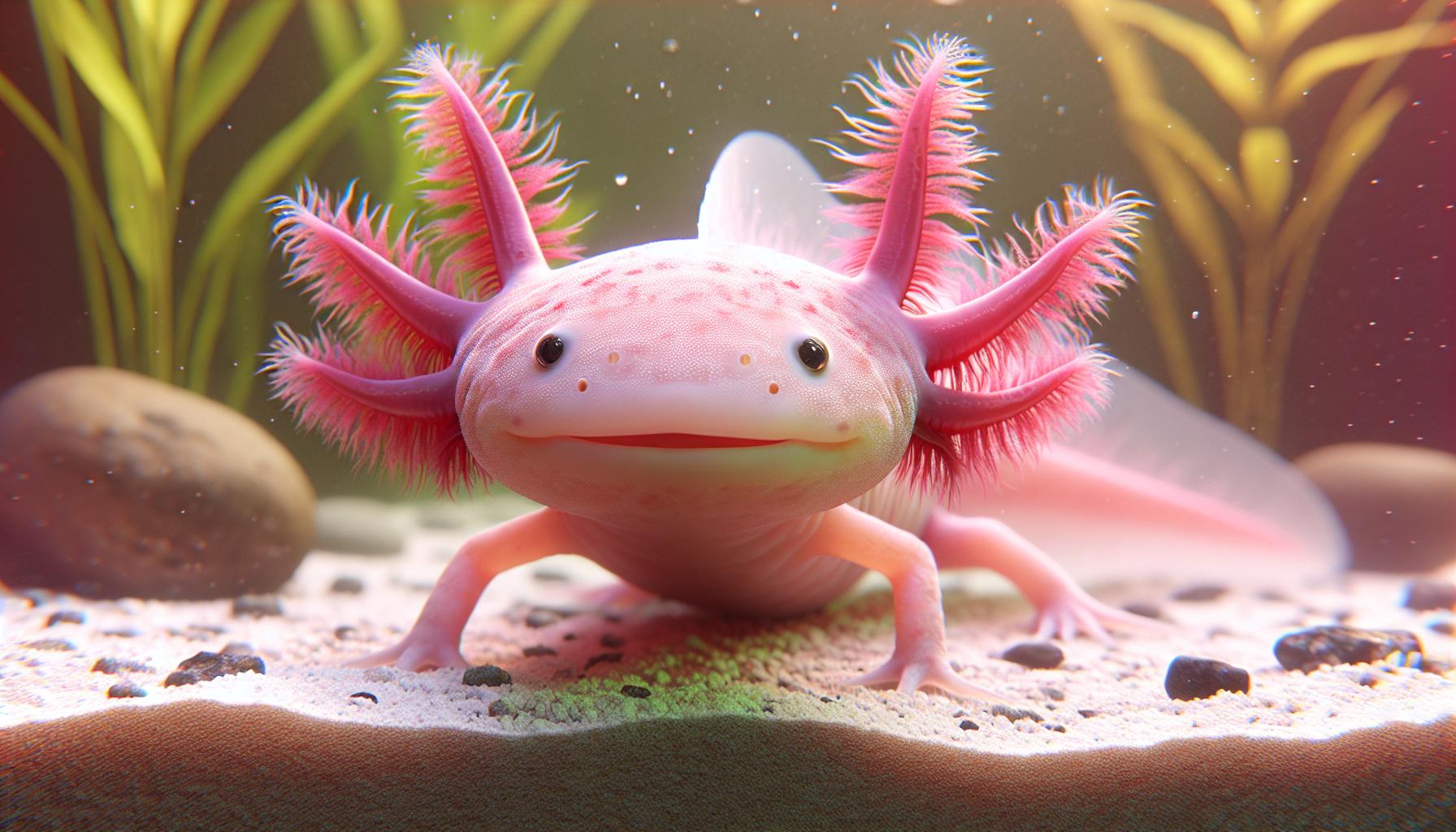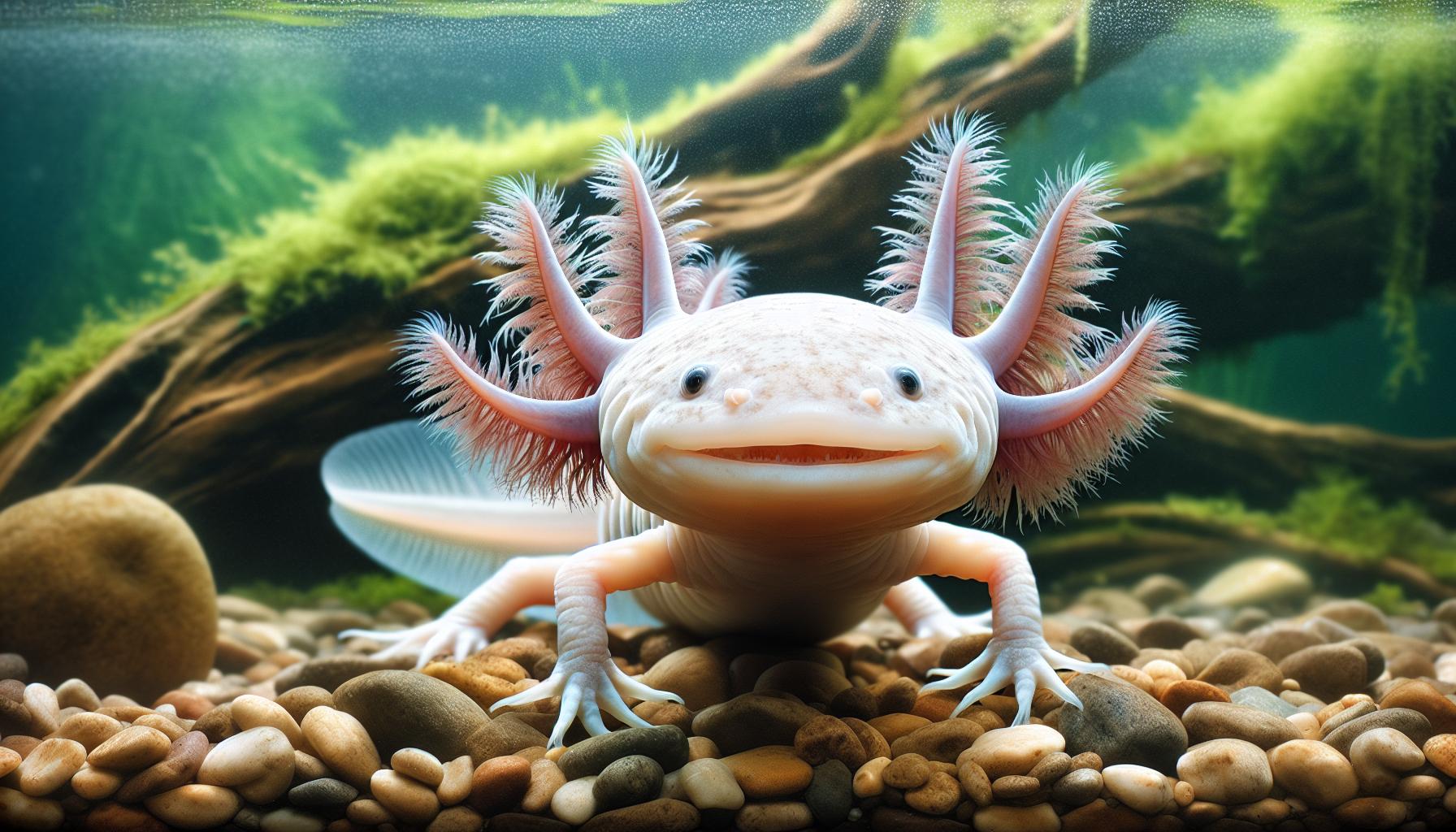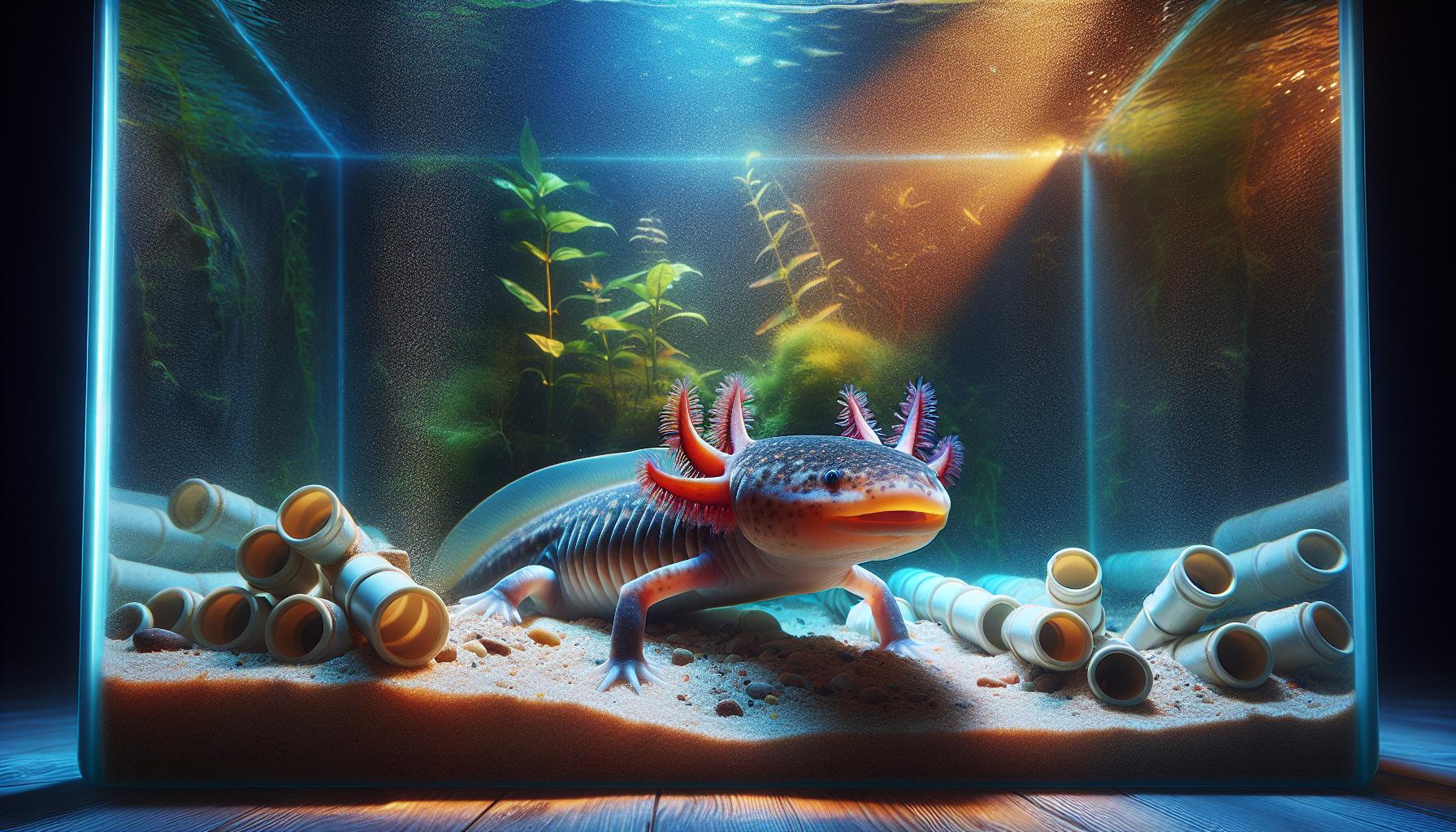
Meet the axolotl – nature’s most adorable underwater oddball that looks like it’s constantly smiling at you! These charming salamanders with their external gills resembling tiny tree branches have captured hearts worldwide and become social media sensations. Native to Mexico’s freshwater lakes and canals these fascinating creatures are often called “walking fish” even though they’re actually amphibians. With their perpetual grin cute button-like eyes and ability to regenerate lost body parts axolotls possess an undeniable charm that’s hard to resist. They’re nature’s perfect combination of weird and wonderful making them increasingly popular as exotic pets.
Cute:-f0r1q474vo= Axolotls
Axolotls possess several distinctive features that contribute to their undeniable charm. Their perpetually smiling faces create an endearing expression that resembles a gentle grin, making them appear friendly and approachable.
Large round eyes dominate their faces, giving them a doe-like appearance characteristic of many creatures humans find appealing. These dark, forward-facing eyes measure approximately 1/4 inch in diameter relative to their 8-12 inch body length.
External gills form delicate crown-like structures on their heads, resembling soft feathery plumes in shades of pink red or black. These gill stalks, called rami, branch into smaller filaments that create a whimsical, fairy-like appearance.
Their bodies display vibrant colors including:
- Pink with black speckles
- Golden with metallic sheen
- Pure white with rose-tinted gills
- Deep black with iridescent scales
Short stubby limbs support their rounded bodies, creating a chubby waddling movement pattern when they walk along tank bottoms. Their proportions mirror those of popular cartoon characters:
- Wide head-to-body ratio
- Small rounded feet
- Plump torso
- Tail length equal to body length
| Feature | Measurement | Contribution to Appeal |
|---|---|---|
| Eye Size | 1/4 inch | Creates baby-like appearance |
| Body Length | 8-12 inches | Perfect hand-held pet size |
| Gill Branches | 3 pairs | Forms crown-like appearance |
| Smile Width | 1 inch | Gives friendly expression |
Their neotenic traits mean they retain juvenile characteristics into adulthood, including soft rounded features typically associated with baby animals. This permanent state of youth enhances their appeal through evolutionary cute triggers that humans naturally respond to.
Physical Characteristics of the Axolotl

Axolotls possess distinctive anatomical features that make them instantly recognizable among amphibians. Their unique body structure combines functional adaptations with endearing qualities that capture human attention.
External Gills and Face Structure
Feathery external gills extend from either side of an axolotl’s head in three pairs of stalks with rami. These gill stalks measure 1-2 inches in length with numerous delicate filaments creating a crown-like appearance. The face features a broad, flat head with lidless eyes measuring approximately 0.5 inches in diameter. Their wide mouth curves upward at the corners, creating the appearance of a perpetual smile. Small nostrils sit near the snout tip, while sensory organs called lateral lines run along both sides of their head.
Variety of Colors and Patterns
Axolotls display diverse color morphs through selective breeding in captivity. Wild specimens exhibit a dark brown to black base with gold speckles, while captive variants include:
| Color Morph | Description |
|---|---|
| Leucistic | Pure white body with black eyes |
| Albino | White body with pink/red eyes |
| Golden | Yellow-gold with metallic sheen |
| Copper | Metallic reddish-brown |
| Lavender | Pale purple with metallic shine |
- Mosaic patterns with multiple colors
- Chimera splits with distinct color divisions
- GFP variants that glow under UV light
Unique Behaviors That Add to Their Charm

Axolotls display distinctive behavioral patterns that enhance their endearing nature. Their actions combine natural instincts with captivating quirks that make them fascinating to observe.
Playful Swimming Movements
Axolotls exhibit graceful swimming patterns characterized by gentle undulations of their bodies. They glide through water using their tail fin as a propeller while their external gills flow like delicate ribbons. These amphibians perform quick darts followed by periods of floating motions when hunting for food. Their movement repertoire includes vertical hovering maneuvers where they balance perfectly still using minimal fin movements. During active periods they execute playful barrel rolls bouncing off aquarium decorations or exploring substrate materials.
Interactive Personality Traits
Axolotls demonstrate remarkable social awareness through their responsive behaviors. These amphibians recognize their caretakers approaching feeding time expressing excitement through increased activity. They investigate new objects in their environment using gentle nudges with their snouts. Female axolotls show territorial behavior by claiming specific areas of their habitat while males display more explorative tendencies. Their curiosity manifests in interactions with tank mates gentle bumping against glass surfaces examination of reflections in mirrors. Experienced keepers report individual personality differences between specimens ranging from bold explorers to shy observers.
Caring for a Pet Axolotl

Axolotls require specific care conditions to thrive in captivity. Their unique physiology demands careful attention to water quality maintenance temperature regulation.
Creating the Perfect Habitat
Axolotls thrive in aquariums with 20 gallons of water per individual. The water temperature stays between 60-64°F (16-18°C) using a reliable cooling system. Fine sand substrate protects their sensitive external gills while enabling natural foraging behaviors. The tank includes PVC pipes caves or ceramic decorations for hiding spots. Water parameters maintain:
| Parameter | Ideal Range |
|---|---|
| pH | 7.4-7.6 |
| Ammonia | 0 ppm |
| Nitrites | 0 ppm |
| Nitrates | <20 ppm |
A gentle filter creates minimal water movement to avoid stress. Light levels remain low with indirect illumination replicating their natural habitat.
Feeding and Diet Requirements
Adult axolotls eat every 2-3 days with portion sizes matching their torso width. Primary food sources include:
- Earthworms (nightcrawlers)
- High-quality salamander pellets
- Frozen bloodworms
- Fresh brine shrimp
- Small pieces of tilapia or salmon
Live foods provide enrichment behavioral stimulation. Food items measure smaller than the axolotl’s head width to prevent choking. A feeding schedule tracks portions timing:
| Age | Feeding Frequency |
|---|---|
| Juvenile | Daily |
| Adult | 2-3 times weekly |
| Senior | 1-2 times weekly |
Calcium supplements enhance nutritional intake through dusted prey items once weekly.
Conservation Status and Protection
Axolotls face critical endangerment in their natural habitat, with wild populations declining by 90% since 1998. The International Union for Conservation of Nature (IUCN) lists axolotls as Critically Endangered due to severe habitat loss in Mexico City’s canal system.
| Conservation Metrics | Data |
|---|---|
| Population Decline | 90% since 1998 |
| Wild Population | <1,000 individuals |
| Protected Areas | 170 km of canals |
| Main Threats | Urban development, pollution, invasive species |
Urban development around Lake Xochimilco threatens the remaining wild axolotl populations through:
- Water pollution from agricultural runoff
- Habitat fragmentation due to construction
- Competition from introduced fish species
- Reduced water quality from sewage discharge
Mexico’s government implements protective measures through:
- Designated conservation zones in Xochimilco
- Strict regulations on wild specimen collection
- Environmental education programs
- Habitat restoration projects
Scientific institutions maintain captive breeding programs to preserve genetic diversity. The Universidad Nacional Autónoma de México (UNAM) operates specialized facilities dedicated to axolotl conservation research. International trade restrictions under CITES Appendix II regulate the movement of wild-caught specimens across borders.
Local communities participate in conservation efforts by:
- Maintaining traditional agricultural practices
- Monitoring water quality in canals
- Reporting illegal fishing activities
- Supporting ecotourism initiatives
Successful breeding programs in captivity help maintain stable populations outside their natural range, creating genetic reserves for future conservation efforts.
These remarkable creatures continue to capture hearts worldwide with their adorable features and fascinating capabilities. From their perpetual smiles to their crown-like gills axolotls represent nature’s perfect blend of charm and wonder. While they face significant challenges in the wild their popularity as pets and their role in scientific research ensure their legacy lives on.
The axolotl’s story reminds us that even the most unusual creatures can become beloved symbols of nature’s diversity. Their future depends on continued conservation efforts and responsible pet ownership ensuring these enchanting salamanders will continue to delight future generations.







